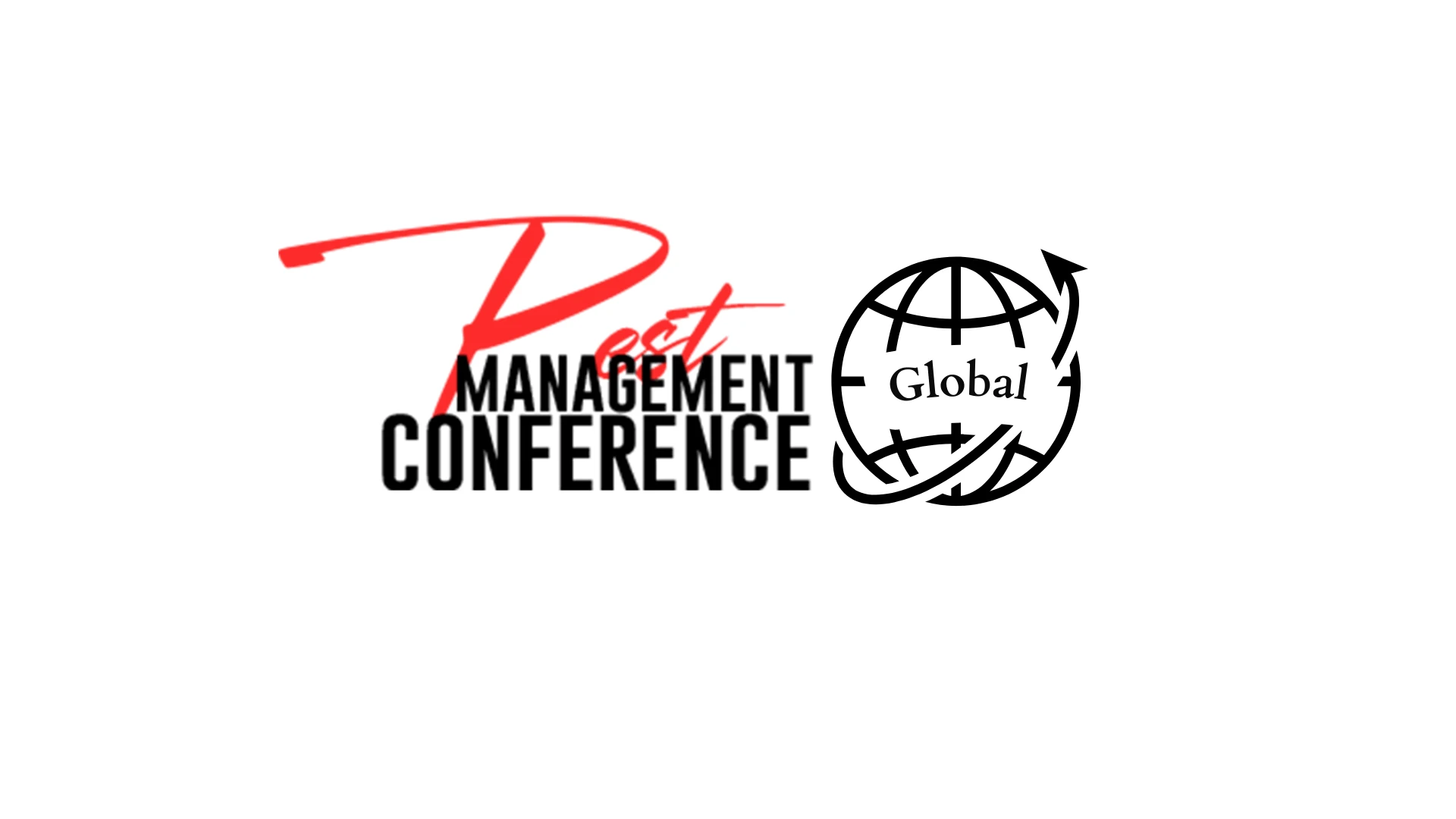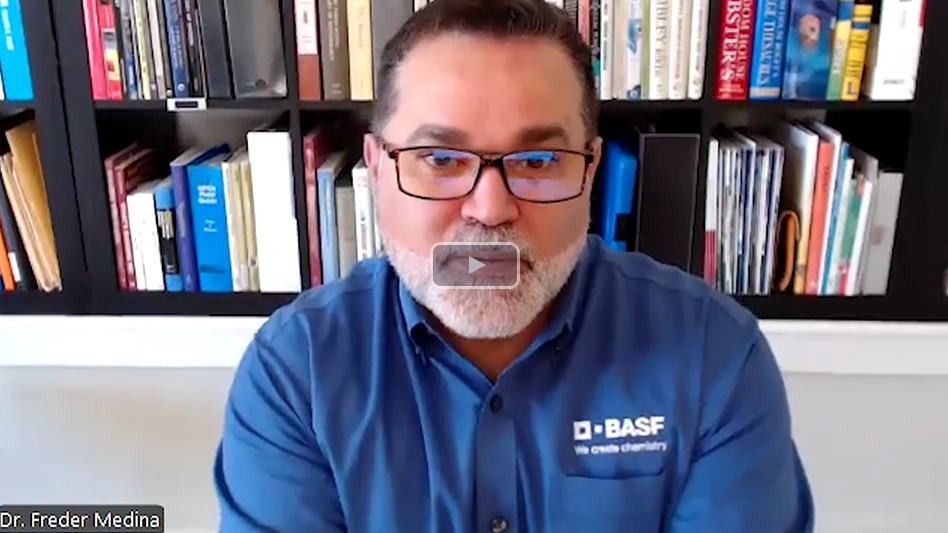Mississippi approves Termidor EP/LI termite treatment option
RESEARCH TRIANGLE PARK, N.C. — The Mississippi Department of Agriculture has accepted the directions-for-use for exterior perimeter/localized interior (EP/LI) termite treatments.
These instructions can be found on the labels for Termidor SC termiticide/insecticide and Termidor WG termiticide/insecticide from BASF. The labels currently contain a prohibition of use statement regarding the states of Louisiana and Mississippi. BASF is working to amend the product label to reflect this approval in Mississippi. Termidor is not registered for termite use in the state of New York.
BASF refers to the EP/LI treatment as a PerimeterPLUS treatment, as it provides a new option for effective post-construction control of subterranean termites.
Forty-eight states have now signed off on the EP/LI use for Termidor. BASF continues to work with state officials to gain approval of this use in Louisiana.
ServiceMaster Group President Katrina Helmkamp leaves company
MEMPHIS, Tenn. — ServiceMaster recently announced that Group President Katrina Helmkamp has left the company to pursue other interests. Helmkamp had oversight responsibility for the Terminix and TruGreen business units. Those units now will report to J. Patrick Spainhour, chief executive officer for ServiceMaster.
“We are grateful for Katrina’s hard work and leadership during her tenure at ServiceMaster,” Spainhour said. “We appreciate her willingness to allow for an orderly transition and wish her the best in her future endeavors.”
Helmkamp joined ServiceMaster in 2005. Previously, she was vice president and director at the Chicago office of The Boston Consulting Group, which worked with ServiceMaster on a variety of consulting projects.
PCT Bed Bug Seminar draws 175 attendees
NEW YORK — More than five decades after being virtually eliminated as a structural pest in the United States, bed bugs are back and they’re back with a vengeance, according Dr. Michael Potter, extension entomologist, University of Kentucky, one of three high-profile speakers at the PCT Bed Bug Seminar, held at New York City’s Park Central Hotel in Manhattan in August.
“Get ready. Bed bugs are back and they’re back big time,” Potter said. “You can’t stick your head in the sand anymore.” But even if PCOs, property managers and public health officials face up to the fact bed bugs are apparently here to stay, it’s not going to be easy controlling them, particularly given the industry’s depleted arsenal of pesticides to manage this cryptic pest.
“If there is a classic example of why you don’t eliminate entire classes of pesticides,” Potter said, “bed bugs are it. We’re in a heap of trouble in terms of the products we have available to fight this pest,” citing classes of chemistry that are no longer available (e.g., organophosphates and carbamates) and the growing threat of pyrethroid resistance. As a result, he said, “I don’t see how this problem is going to get better. I think it’s going to get chaotic. This is the most challenging pest I’ve encountered in my career. We’re in big trouble.”
Potter kicked off his 90-minute presentation with a brief history of bed bug control and treatments. Today’s treatment techniques are much more targeted, not to mention environmentally sensitive, involving a range of options including heat treatments, vacuuming, steam treatments, fumigation and cold, as well as the use of insect growth regulators, dusts and pesticide sprays. In addition, inspection dogs are being used to identify bed bug infestations and mattress covers are growing in popularity among PCOs and the hospitality industry. (A number of the aforementioned technologies were on display at the seminar, including representatives of McLaughlin Gormley King, Residex, Steri-Fab, Hi-Tech Cleaning Systems, Zoecon Professional Products/Wellmark International, Whitmire Micro-Gen Research Laboratories, Mattress Safe, ThermaPureHeat, Protect-A-Bed, Temp-Air and BedBugDog.)
One of the keys to successful control is asking the right questions when a customer calls with a problem. Some of the questions you should ask, according to Potter, are:
- Have you been involved in any overnight travel recently?
- Have you acquired any used furniture recently?
- Have you had any overnight visitors recently?
- Did you wake up with “insect” bites this morning?
- Have you spent any time in multi-unit housing recently?
How the customer responds to those questions will give PCOs a reasonably good idea if bed bugs are a likely cause of the problem. When dealing with the hospitality industry, where bed bugs are a growing problem, Potter suggests PCOs work with hotel and motel management to develop preventive bed bug programs that include: (1) routine bed checks by housekeeping; (2) monthly head board checks by maintenance personnel; (3) quarterly detailed inspections by pest management firms; and (4) ongoing training of hotel staff.
Richard Cooper, technical director, Cooper Pest Solutions, Lawrenceville, N.J., added that one of the keys to successful bed bug control is identifying the infestation early, a fact validated by his ongoing field studies. When Cooper Pest Solutions was able to identify an infestation in its earlier stages, Cooper said, “We were able to eliminate 100 percent of the bugs 81 percent of the time in two to three visits.” However, the company’s success rate dropped with more mature populations. “Early detection is quite important,” he said, pointing out that technicians need to realize bed bug infestations are not limited only to beds or bedrooms. “While the majority of bed bugs are associated with sleeping areas, they also can be in other areas as well,” he warned, such as upholstered furniture, wall hangings and even personal items (e.g., stuffed animals, books, etc.). “They are masters at dispersing throughout the entire environment. They also are efficient at moving between (apartment) units.” That’s why PCOs should treat adjoining bedrooms and apartments whenever possible, as well as do whatever they can to enhance customer cooperation.
“In a low-level infestation with a cooperative client, we were able to solve the problem within two to three visits 88 percent of the time,” Cooper said. However, that number dropped to 50 percent when working with an uncooperative client.
In his closing remarks, Cooper said there are six keys to a successful bed bug management program. They include: early detection, treatment of adjacent units, education and client cooperation, a multi-disciplinary approach to control, thorough follow up and comprehensive documentation.
“Tying everything together in a comprehensive service report is essential,” he said. “Comprehensive records are your best defense in court. It’s a way to protect yourself and protect your client.”
The final speaker on the program was Denise McCurry, vice president of litigation, MGM Mirage, Las Vegas. She indicated that bed bug litigation continues to spread with alleged victims citing a variety of claims, including severe emotional distress, fraudulent concealment, gross negligence, intentional infliction of emotional distress, breach of express warranty, breach of implied warranty, fraud, misrepresentation, strict product liability and even assault and battery.
“You need to be aware of what courts are holding people liable to as it relates to bed bug litigation,” she said. “You need to be proactive. You need to know the law.”
The best thing you can do, according to McCurry, is thoroughly train your field personnel in all aspects of bed bug identification and control. “It’s never the president or vice president of a company that creates liability for the company,” she said. “You need to make sure you have trained your people.”
Professional Women in Pest Management raising funds for scholarship
FAIRFAX, Va. — The Professional Women in Pest Management (PWIPM) group, part of the National Pest Management Association, is raising money for its scholarship fund.
Based on the funds raised thus far, PWIPM said, the group is anticipating a record-breaking year, which will allow it to provide its annual scholarship at its maximum allowance, $2,500 per year.
The PWIPM scholarship is awarded to at least one female interested in advancing or securing a career in the pest management industry. The scholarship may be used by the recipient to defer costs related to advancing her education and/or career in the pest management industry. The scholarship recipient will be awarded a minimum of $1,000 plus $500 toward travel expenses to attend NPMA’s annual convention and exposition, PestWorld.
PWIPM will be selling raffle tickets at PestWorld 2007, Oct. 17-20 in Orlando, Fla., with the prize winner taking home a piece of Tiffany & Co. jewelry. Raffle tickets are $10 each and for $100 you get 12 tickets and a pink bracelet showing your support for PWIPM. For donations of $250 you will receive 25 tickets, the pink PWIPM bracelet and the new PWIPM lapel pin.
To order additional PWIPM bracelets or lapel pins, visit www.npmapestworld.org. They are $5 each and all proceeds go to the scholarship fund. If you are interested in contributing to the PWIPM Scholarship Fund, please contact Dominique Stumpf at dstumpf@pestworld.org.
Bayer ES protects intellectual properties
RESEARCH TRIANGLE PARK, N.C. — Etigra has agreed to cease sales and to recall Etigra products that Bayer Environmental Science considers an infringement on one of its patents.
Bayer asserted that two termiticide products recently introduced by Etigra, Imida E-Pro 2F Pre/Post Construction Insecticide and Imida E-Pro 75 WSP Pre/Post Construction Insecticide, infringe Bayer’s U.S. Patent No. 6,323,224 protecting the use of imidacloprid on wood products. Bayer invented and introduced to the market the use of imidacloprid to treat wood structures and surfaces.
Separately, Bayer continues to pursue its counterclaims in a pending lawsuit in regard to Bayer’s patented use of imidacloprid on fertilizer, and has filed an additional counterclaim of copyright infringement for infringement of several of Bayer’s product labels. The Bayer lawsuit counters a legal action initiated by Etigra, seeking a declaratory judgment that Etigra’s method of formulating imidacloprid on fertilizer does not violate the Bayer-owned patent.
Bayer invented the mixture of imidacloprid on fertilizer, sold as the brand name product Merit Plus Turf Fertilizer.
Dates, speaker lineup set for Nebraska Urban Pest Management Conference
LINCOLN, Neb. — The 16th annual Nebraska Urban Pest Management Conference will take place Feb. 19-20, 2008, in Lincoln. Sponsored by the University of Nebraska-Lincoln Extension Institute of Agriculture and Natural Resources, and the Nebraska State Pest Control Association, the conference will cover many areas of pest management and feature top-notch speakers including Gary Bennett, Purdue University; James Campbell, USDA-ARS; Robert Corrigan, RMC Pest Management Consulting; Laurel Hansen, Spokane Falls Community College; Roger Gold, Texas A&M University; Wayne Kramer, Louisiana State University; and Bill Pursley, American Institute of Baking.
Conference registration costs $130 before Jan. 31, and $150 after; vendor registration costs $400. The fees cover the cost of lunches and coffee/soft drink breaks during the conference. No refunds will be issued after Feb. 4.
For more information, or to register, contact Dr. Shripat T. Kamble, UPM Conference coordinator, at 402/472-6857.
Registration forms also are online at entomology.unl.edu/upm.shtml.
Bed bug travel guide available
LAWRENCEVILLE, N.J. — Cooper Pest Solutions has published the “Cooper Travel Guide to Bed Bugs,” which includes steps people can take to reduce the likelihood that bed bugs will return with them from their trip.
Written by industry bed bug expert Richard Cooper; Jeff White, Cooper’s bed bug research entomologist; and Stephanie Madden, the guide brings together the latest industry research into a practical travel guide.
The guide explores some bed bug biology, and offers color photographs to help identify the tiny pests. It also offers travelers tips on how to prepare and pack prior to leaving (i.e., take clothes that can be washed in hot water, and bring a flashlight); what to do when they arrive at their destination; how to quickly inspect a hotel room; packing to go home; and steps to take in case bed bugs have traveled with them back home. The guide also includes checklists for pre- and post-travel inspections.
Cooper Pest Solutions is planning to release an audio version of the guide.
The guide costs $10.95, and can be purchased on the company’s Web site, www.bedbugcentral.com. For more information, call 800/949-2667.
FMC Professional Solutions launches new Web site
PHILADELPHIA, Pa. — FMC Professional Solutions, a division of FMC Corporation, announced it has launched a new Web site, www.fmcprosolutions.com, filled with information about its expanding line of products for the pest control, golf, lawn care and nursery/greenhouse industries.
This new Web site is visually engaging and easy to navigate, FMC reports. Site visitors will be able to find segment-specific information with just a click of their mouse. In fact, information about the products in each market segment can be found by clicking on the specific market segment link, shown on the home page of the site.
Third mosaic poster completes Bell Labs’ series
MADISON, Wis. — The third and final mosaic poster in Bell Laboratories’ More Than Meets the Eye campaign is now available, completing the limited-edition poster series that illustrates Bell’s manufacturing philosophy.
All three 24- by 36-inch, four-color posters are mosaic composites of thousands of tiny photo cells of rodents, Bell products and scenes from Bell’s manufacturing and laboratory facilities. This final poster, viewed overall, is an illustration of a mouse eating Fastrac Blox with the caption, “Superior Technology, Product Performance & Support. Get the Whole Picture.”
Other posters in the series are mosaic illustrations of a Norway rat eating Bell’s Final Blox and a mouse gnawing Contrac Blox.
The posters are printed on a heavy, durable paper with an overall gloss-aqueous coating to enhance and protect the poster quality. All posters are available without charge from Bell distributors.
PCT Pests 2008 Calendar now available to order
Richfield, Ohio — The PCT Media Group, in association with printing specialist Koenings ProSource, has announced the availability of the PCT Pests 2008 Calendar, a wall calendar featuring 13 colorful, attention-grabbing insect images photographed by Tom Myers, one of the leading entomology photographers in the country. Each pest photo comes with a detailed description.
Each calendar can be personalized to spotlight your message in front of your customers all year long. Recipients refer to their calendar multiple times daily, constantly reminding them of your company’s name and contact information.
The calendars are available for as little as $1.99 each and the minimum order is 100 calendars.
Each calendar is 10 7/8 inches by 18 ½ inches open. For questions call 888/819-1029, e-mail tim@koenigs.com or see page 139 of this issue. All calendar orders must be received by Oct. 26, to ensure pre-Christmas delivery.
Fumigation companies compete in fourth annual ‘Banner Bonanza’
INDIANAPOLIS — Companies performing fumigations have a unique opportunity to market their services. After all, the buildings they fumigate are covered in brightly colored tarps that get the attention of passers-by. The winners of the fourth annual “Fumigation Banner Bonanza Contest” — sponsored by the Pest Control Operators of California (PCOC) and Dow AgroSciences, the manufacturer of Vikane gas fumigant — are taking advantage of this unique marketing opportunity.
For the second year in a row, the first-place prize was awarded to Specialty Termite, Pleasanton, Calif. The contest requires that a winner from last year submit a new banner, so Specialty won two years in a row, with two different banners. This year, Specialty’s banner featured a house with the tag line, “What’s in Your Walls?”
“As all pest management professionals are aware, competition is fierce,” said Mark Kearns, president and owner of Specialty Termite. “Companies have to take advantage of any unique marketing opportunities available and try to stand out from the crowd. Banners have proven a successful means to advertise our company, for a very reasonable cost.”
Finishing in second place was Omega Termite & Pest Control, Oakland, Calif., with a banner depicting the company logo on a white background with the words “Another Quality Fumigation by Omega Termite & Pest Control.”
Taking third was Bullet Pest Control, Bakersfield, Calif., whose banner featured the company logo and a profile of a termite asking, “Got Termites?”
Earning honorable mentions in this year’s contest were Clark Pest Control, Stockton, Calif.; Ecola Pest Control, Mission Hills, Calif.; and Newport Exterminating, Irvine, Calif. Fumigation companies were asked to submit color photos of their banners, which were required to feature a distinguishable logo, the business name and phone number, and be visible to passers-by. Banners were judged on not only readability from a distance, but professionalism, visual impact and attractiveness. The first-place winner received a $1,500 gift certificate, while second- and third-place finishers received $1,000 and $500 gift certificates, respectively.
“We’re proud to support this contest each year as a way to help our fumigator partners build their businesses,” said Jason Nelson, Dow AgroSciences marketing manager for Vikane gas fumigant.
IPM finds a home on the Web thanks to PPMA
FAIRFAX, Va. — “Integrated Pest Management” is a term that pest professionals are familiar with; however, recent research conducted by the Professional Pest Management Alliance (PPMA) reveals that it remains a mystery to 62 percent of homeowners.
“Back to school season” often proves a critical time in communicating IPM to consumers. More than 30 states have legislation on the books regulating school IPM, and often the public supports these programs in their own school districts without really understanding the benefits and drawbacks. To provide both pest professionals and consumers with a resource on IPM, the Professional Pest Management Alliance launched WhatisIPM.org earlier this year.
Providing a consumer friendly definition of IPM and offering tips to “pest-proof” homes, schools and businesses, WhatisIPM.org presents a comprehensive overview of this topic. NPMA members looking to take advantage of this new Web site now have access to the WhatisIPM.org logo to link to their own company Web site.
If you are interested in accessing the WhatisIPM.org logo for your Web site or would like more information about the PPMA, contact Cindy Mannes, executive director, at cmannes@pestworld.org. Current PPMA Guardians and contributors can download the logo on PPMATools.org.

Explore the September 2007 Issue
Check out more from this issue and find your next story to read.
Latest from Pest Control Technology
- Moneypenny is a Provider of Virtual Receptionists
- Video: Top 10 PCT Photo Contest Finalists
- Massey Services Expands with Southeast Commercial Region
- Pest Management Foundation Announces Kevin J. Burns Scholarship
- How to Identify Clover Mites
- Termite Threat Halted in Southern Florida
- PCT Media Group Adds Managing Editor Katie Hobbins
- Evens Clerjuste on Team Communication as Company Growth Point





